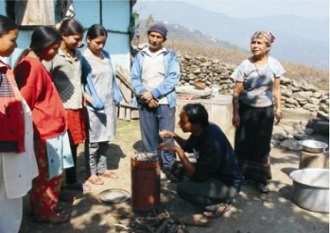Environ Sci Technol. 2009 Aug 1; 43(15):5586-91.
Deployment of coal briquettes and improved stoves: possibly an option for both environment and climate.
Zhi G, Peng C, Chen Y, Liu D, Sheng G, Fu J.
Key Laboratory for Atmospheric Chemistry, Centre for Atmosphere Watch & Services of CMA, Chinese Academy of Meteorological Sciences, Beijing 100081, China.
The use of coal briquettes and improved stoves by Chinese households has been encouraged by the government as a means of reducing air pollution and health impacts. In this study we have shown that these two improvements also relate to climate change. Our experimental measurements indicate that if all coal were
burned as briquettes in improved stoves, particulate matter (PM), organic carbon (OC), and black carbon (BC) could be annually reduced by 63 +/- 12%, 61 +/- 10%, and 98 +/- 1.7%, respectively. Also, the ratio of BC to OC (BC/OC) could be reduced by about 97%, from 0.49 to 0.016, which would make the primary emissions of household coal combustion more optically scattering. Therefore, it is suggested that the government consider the possibility of: (i) phasing out direct burning of bituminous raw-coal-chunks in households; (ii) phasing out simple stoves in households; and, (iii) financially supporting the research, production, and popularization of improved stoves and efficient coal briquettes. These actions may have considerable environmental benefits by reducing emissions and mitigating some of the impacts of household coal burning on the climate. International cooperation is required both technologically and financially to
accelerate the emission reduction in the world.



